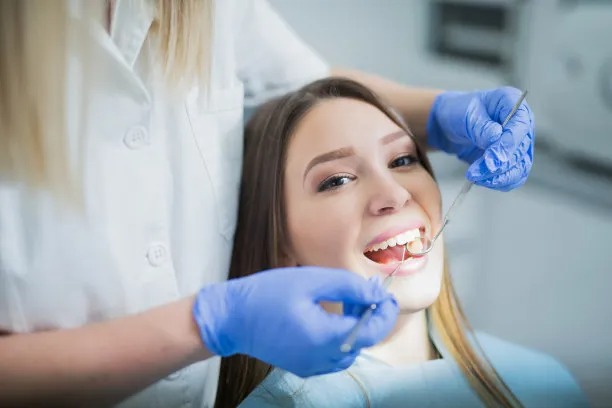Essential Precautions to Consider Before and After Getting a Dental Filling for Optimal Oral Health and Recovery
Summary: Dental fillings are a common procedure used to restore teeth affected by decay or damage. However, understanding the essential precautions before and after getting a dental filling is crucial to ensure optimal oral health and a smooth recovery. This article explores significant considerations, including pre-treatment preparation, post-treatment care, dietary adjustments, and signs of complications. By adhering to these precautions, patients can enhance the effectiveness of the filling and contribute to overall dental well-being.
1. Pre-Treatment Preparation for Dental Fillings

Before undergoing a dental filling procedure, thorough preparation is key to ensure a smooth and successful experience. Firstly, patients should communicate openly with their dentist regarding any health conditions, medications, or allergies that may affect the treatment. This information allows the dentist to tailor the procedure to the patients specific needs.
Secondly, it is advisable to avoid eating a heavy meal right before the appointment. Having a light snack is acceptable, but a full stomach may lead to discomfort during the procedure, especially if sedation is involved. Additionally, patients should plan for aftercare by arranging transportation if they will receive sedation, as driving may not be safe immediately post-treatment.
Lastly, maintaining good oral hygiene before the appointment is essential. Brushing and flossing will help reduce the risk of infection and enhance healing after the filling has been completed. This preparation phase sets a solid foundation for effective treatment and recovery.
2. Post-Treatment Care for Dental Fillings
After getting a dental filling, proper care is crucial for a successful recovery. Patients should monitor the treated area for any discomfort or sensitivity, which is normal but should gradually decrease. Gently rinsing the mouth with warm saltwater can help soothe soreness and promote healing.
Additionally, its important to avoid chewing on the side of the mouth where the filling was placed for at least 24 hours. This precaution helps to prevent undue pressure on the newly filled tooth, ensuring that the filling sets properly without complications. Using a soft-bristled toothbrush can also minimize irritation in the treated area.
Maintaining follow-up appointments with the dentist is vital. These check-ups allow the dentist to assess the effectiveness of the filling and address any issues that may arise. Regular monitoring can lead to early detection of further dental problems and ensure long-term oral health.
3. Dietary Adjustments After Dental Fillings
Post-treatment dietary choices significantly influence recovery after a dental filling. Initially, patients should avoid hard, sticky, or extremely hot or cold foods that could irritate the filling or cause discomfort. Foods like nuts, caramel, or ice-cold drinks can pose risks and should be consumed with caution.
For the first few days after the procedure, it is advisable to favor soft foods such as yogurt, applesauce, and mashed potatoes. These options can provide nourishment while protecting the freshly treated area. Carefully monitoring food temperature can also help in preventing sensitivity that may occur post-treatment.
Staying hydrated is crucial as well. Drinking plenty of water assists in maintaining overall oral health and assists with the healing process, flushing out food particles and bacteria that may linger in the mouth following the procedure.
4. Recognizing Complications Post-Filling
Awareness of potential complications after getting a dental filling can greatly benefit recovery. Common issues include excessive pain, prolonged sensitivity, or visible irritation around the filling itself. If pain persists beyond a few days or worsens rather than improves, it is essential to contact the dentist immediately.
In some scenarios, patients may experience an allergic reaction to the dental materials used. Signs of an allergic reaction can include swelling, rashes, or other unusual symptoms around the mouth. Recognizing these symptoms early is critical for effective intervention.
Additionally, any shifts in bite alignment or difficulty chewing may indicate that the filling needs adjustment. Patients should be proactive in addressing these issues as early action can prevent further complications and ensure that the filling remains effective over time.
Summary:
In conclusion, careful consideration of precautions before and after receiving a dental filling significantly contributes to optimal oral health and a smooth recovery. From pre-treatment preparation to recognizing complications, each step is vital for ensuring the longevity of the filling and the overall well-being of the patient’s dental health. Following these guidelines will help patients navigate their dental care more effectively.
This article is compiled by Vickong Dental and the content is for reference only.



